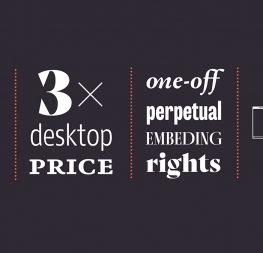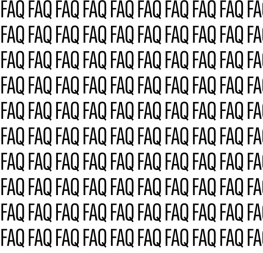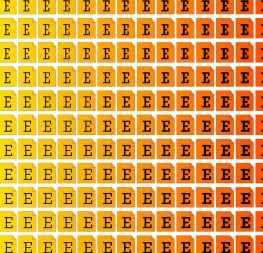
by josé scaglione
Typography is, to a great extent, a graphic designer’s main tool to communicate and convey messages. Understanding how type works and developing typographic sensitivity is in many cases what sets successful design apart from the rest. Fonts, when well used, amplify the effectiveness of words and the overall visual quality of a piece of design.
If choosing fonts, pairing them, and composing text are not simple tasks for you, understanding the legality of font licensing could be almost as challenging. The good news is we are here to help!
Nowadays graphic designers are faced with a rather complex universe of legal and technical issues that can turn buying fonts into a frustrating and time consuming experience. This article provides information about the basics of font licensing to clarify a subject that looks more complex than it really is.
There always has to be some kind of disclaimer, so here it is: we’re not attorneys so you should talk with one to find out rules specific to your circumstance and location.
So, why licensing?
For more than 500 years type was cast in lead. Hence buying fonts implied moving around heavy boxes of metal. Typography lost its mass and weight in the digital era to make way for the zeros and ones of binary code. Therefore, typography is now commodified like software or music files. Although most people speak of ‘buying fonts,’ all that is really sold is the licence to use them. The actual design (software) of the font remains the property of the type designer.

In letterpress a font is a physical object, in this case a set of Garamond Small Caps 11pt, that includes the most basic characters of the Latin alphabet.
The licence describes permissions and restrictions about how the font software may be installed and used. Here are some of the most common things to be found in an End User Licence Agreement, or EULA. (This text is based on the text published by the Association Typographique Internationale called Fonts and Fairness, which we recommend and is publicly available at http://www.atypi.org/fonts-and-fairness/five-basic-rules-for-buying-fonts).
EULAs usually specify:
- Amount of CPUs and geographical locations where the font can be installed
- Whether the font can be placed on Web servers or be embedded in files and apps
- Defines if the font can be modified, decompiled, or recompiled
- Sets permissions to transfer the font, redistribute, or send it to a print company
- Explains which uses of the font would require additional licensing
More than one licence option
A font licence is no more or less complex than any other software license. But since fonts can be used in a wide variety of situations, some of these require their own specifications. As a result licences can be — and many times actually are — tailored to a client’s needs. However, about 95% of font usage is addressed with just four standard licence types.
1. Temporary
This is either a free or very inexpensive licence that allows designers and developers to test the fonts and show them to their customers before committing to a purchase. It does not allow the fonts to be used on commercial work and it is sometimes given for a limited period of time.
Members of TypeTogether’s Premier partnership program can download fonts with temporary non-commercial licences for testing at any time, and we also give these licences upon request.
2. Desktop
This type of licence still resembles what was expected of a pre-Internet era EULA. It allows installing the font families on a given number of workstations and using them to create visual communication pieces. This is typically used by graphic designers to create artwork such as logos, brochures, posters, web banners, books, signage, and more.
At TypeTogether our regular desktop EULA allows for installation on 5 workstations, a sensible minimum number aimed at small studios or freelancers with desktop and laptop computers. It also permits embedding on a PDF and sending to a print company.
3. Webfont
With the invention of the webfont formats, a new kind of font licence became necessary. In this case the font software is not installed on a personal computer but stored on a web server, where users (readers) have access to it. This is an interesting scenario in which licence pricing can be related to the amount of people reading the font rather than using the font. Hence licences usually state a limit of pageviews, servers, site visitors, and domains, to name a few.
The TypeTogether webfont EULA allows for perpetual self-hosting, and our minimum page view tier is 10,000 visitors per month or 120,000 per year — more than enough for a small or medium sized business. Read this article for more information about how webfonts are marketed and how to compare them.
4. Mobile app
This is another licence that came to exist because of technical advances. Frequently called “Light OEM”, it allows programmers to embed fonts into another piece of software that will in turn be sold and distributed, namely an app for mobile phones or tablets. Most foundries offer app licences based on the amount of titles the fonts will be embedded in, the amount of sold copies, and the amount of operating systems that are supported by the mobile app.
TypeTogether’s mobile app licence is perpetual, regardless of the number of copies sold and the amount of mobile operating systems, which is a category-leading deal.
5 Variable fonts
The excitement with which type designers met the introduction of the design variation table technology is only comparable to the absolute commercial hesitation it caused. Variable fonts contain a range of styles (eg. from light to heavy) in a single font, so the question of how to price it could have many answers... and it does. But in terms of licensing, variable fonts follow the same criteria described above and most commonly fall into one of the four licensing models we have already discussed.
At the TypeTogether store we offer variable fonts for mobile apps, desktop, and webfonts which is arguably the most useful of them all. And to make this even better, all variable fonts now have an extra discount of 15% (read about our variable fonts here).
There are some scenarios that require special licensing conditions. Most of them imply a situation in which the typefaces become a constitutive (integral) part of a commercial product, whether by its functionality or its aesthetic value. For example when fonts are embedded in a software or web application, they can be used as an option for customising an end product, e.g. business cards, t-shirts, etc., or when they are used as part of an operating system or a video game for consoles.
If you are in doubt about what kind of licensing you need for a project, simply contact us and request advice. This is, after all, part of our job of doing type together with you.
Useful links:
- Our FAQ page includes a specific section about licensing
- An article about variable fonts that explains how they work and how you can license them with us
- An article about font licensing with apps
- Our EULAs: Desktop, webfont, and app
About Us
TypeTogether is an indie type foundry committed to excellence in type design with a focus on editorial use. Additionally, TypeTogether creates custom type design for corporate use. We invite you to browse our library of retail fonts or contact us to discuss custom type design projects.
Schedule an introduction meeting to learn more.


